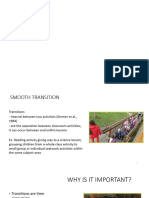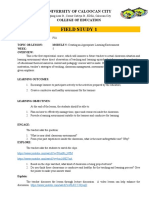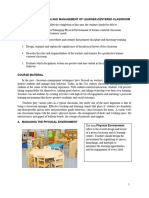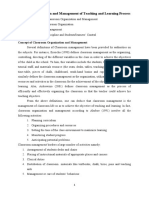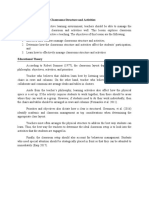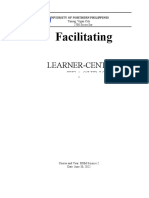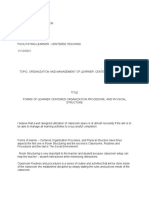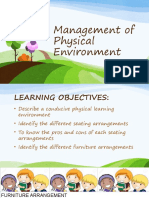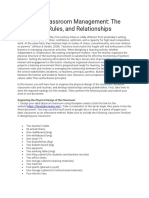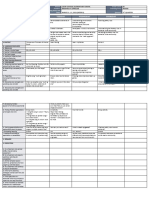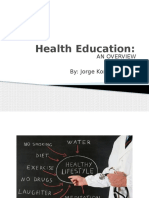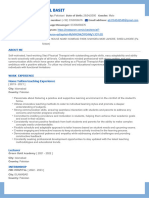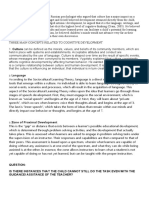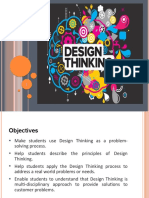0% found this document useful (0 votes)
166 views29 pagesContent Management
Classroom structures refer to the physical layout, organization of materials, and routines in a classroom. An effective classroom structure (1) defines clear traffic patterns, (2) arranges furniture so the teacher can easily view all students and access all areas, and (3) clearly labels and organizes all materials. Transitions between activities should also be smooth, with expectations taught and cues provided to students.
Uploaded by
Adrian ResolisCopyright
© © All Rights Reserved
We take content rights seriously. If you suspect this is your content, claim it here.
Available Formats
Download as PDF, TXT or read online on Scribd
0% found this document useful (0 votes)
166 views29 pagesContent Management
Classroom structures refer to the physical layout, organization of materials, and routines in a classroom. An effective classroom structure (1) defines clear traffic patterns, (2) arranges furniture so the teacher can easily view all students and access all areas, and (3) clearly labels and organizes all materials. Transitions between activities should also be smooth, with expectations taught and cues provided to students.
Uploaded by
Adrian ResolisCopyright
© © All Rights Reserved
We take content rights seriously. If you suspect this is your content, claim it here.
Available Formats
Download as PDF, TXT or read online on Scribd
/ 29
